Tillandsia ixioides
Click thumbnails for full size, scaled to a new window.
Tillandsia ixioides
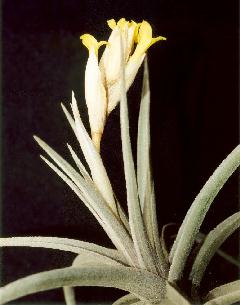
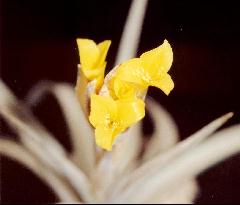
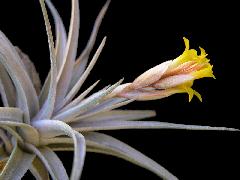
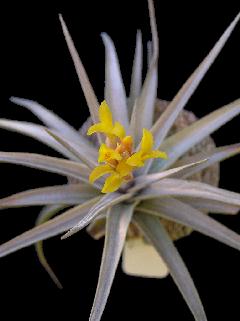
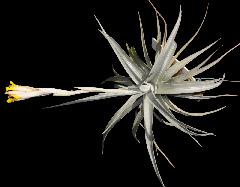
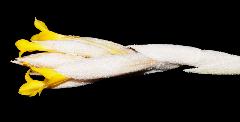
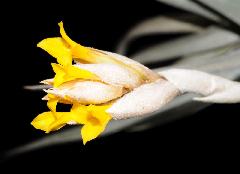
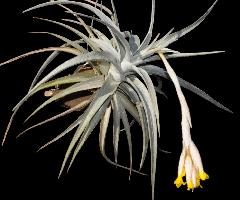
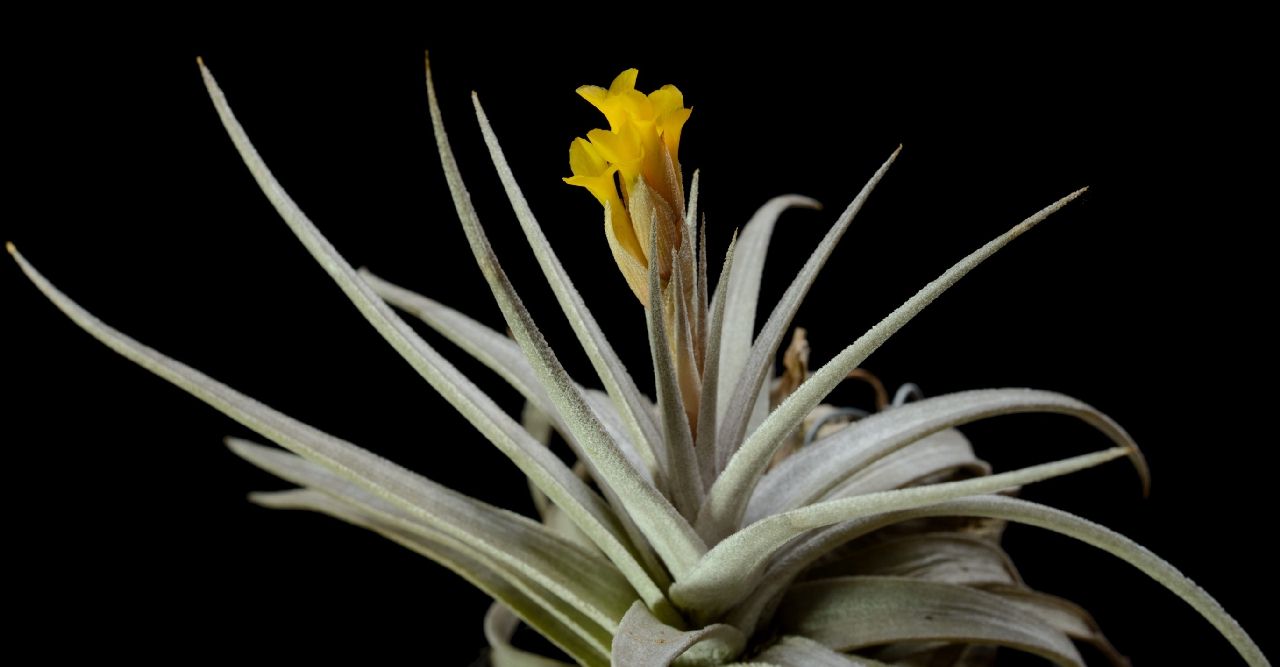
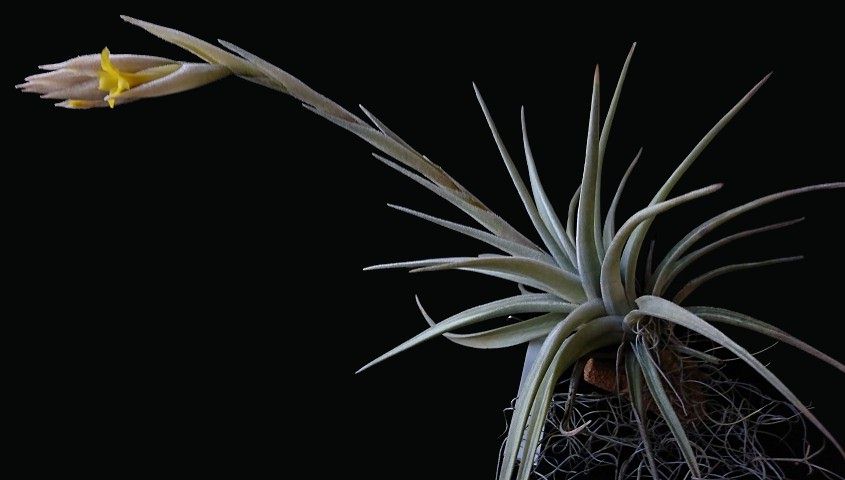
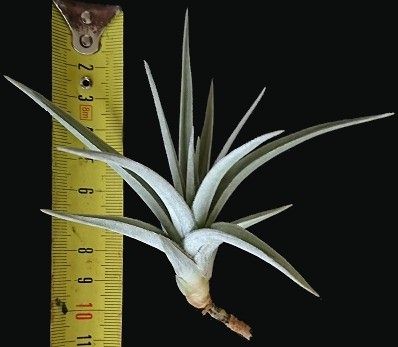
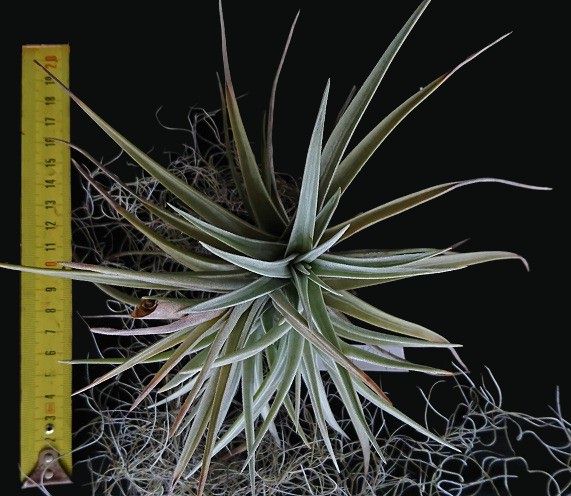
| George Nieuwenhoven 10/15 |
Steve Molnar 06/18 |
George Nieuwenhoven ... "This one is easy to grow in Adelaide as long as it gets good light, I love the colour particularly set off by the silver leaves."
Steve Molnar ... "As a request from CL I am re-posting pics of my T. ixioides from when it flowered in July 2017 to now where it has grown 3 nice healthy pups and produced some healthy seed which has germinated and is growing well also. A great plant all round, and from memory it was fragrant also."
Chris Larson ... "The reason that I was interested in this one is the fragrant claim. Tillandsia International have made this claim, that their small form is fragrant. I tried to get together an order from TI for years & was in the throes as the revised rules came into play. I have been asking about this for years, and it has been mentioned many times here. I figured that someone had to have imported this clone, though it doesn’t seem very small."
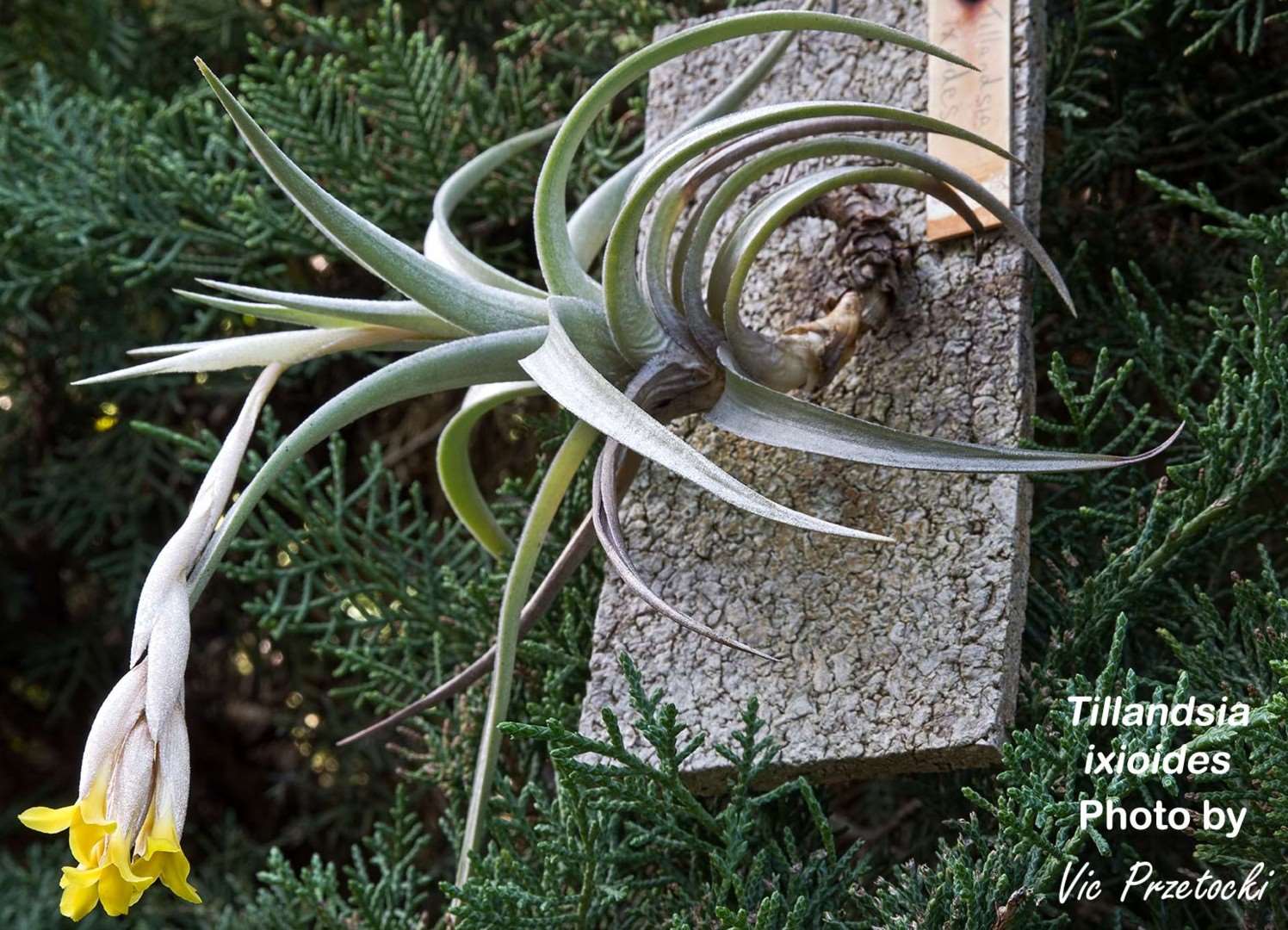
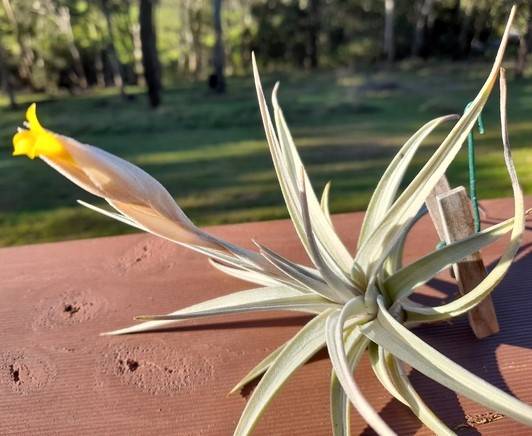
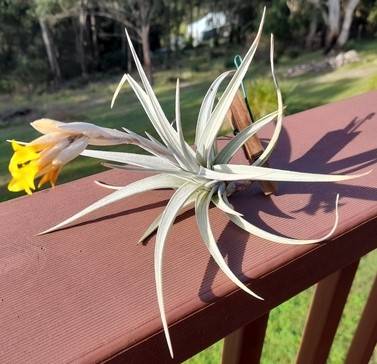
| Vic Przetocki 07/21 |
Stephen Haines 07/22 |
Stephen Haines ... "One of Chris's ixioides A45."
Chris Larson ... "Wild collected from Argentina in 1998."
Tillandsia ixioides subsp. viridiflora
(Note: Originally ixioides var. viridiflora (1980's)
then jucunda var. viridiflora (1990's)
now reclassified as ixioides ssp. viridiflora)
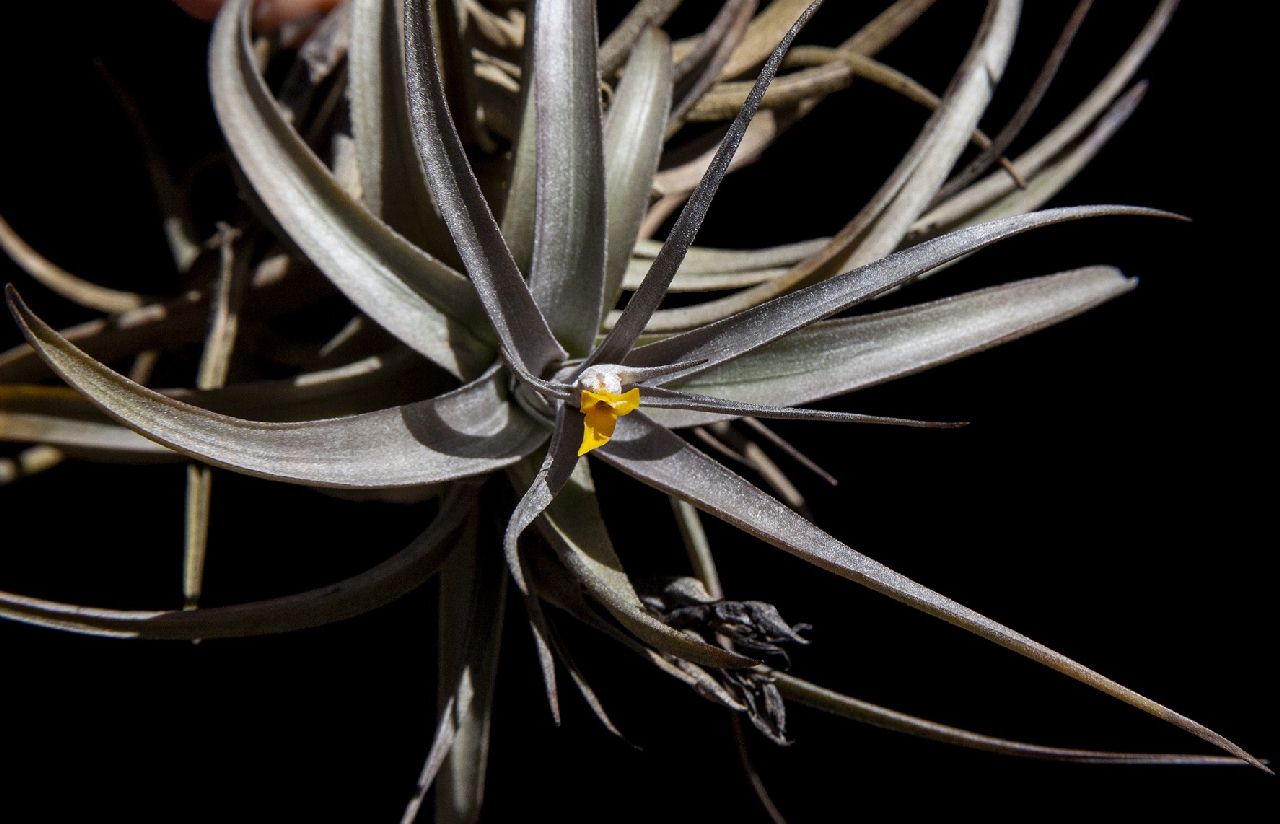
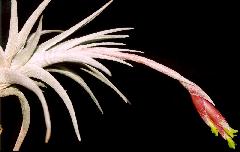
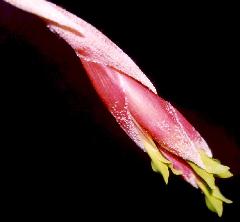
| Lloyd Godman 09/18 as unknown16 |
Ken Woods 08/04 as jucunda v. viridiflora |
Lloyd Godman ... "This plant is in flower at the moment - it is larger than my other T. ixioides and has a much more caulescent form it is also flowering earlier than all my other ixioides. I probably got the plant from Maurice Kellett. Interested in any ideas on this one?"
Andrew Flower ... "I have grown, from seed I collected in NW Argentina, several populations of T. ixioides, and they have been particularly variable with a good percentage of depauperate, distorted inflorescences. If your plant came from Maurice, it would likely have been raised from seed.
(As a rider, it may be that this variation in Argentinian seed was caused by crossing and back-crossing between T. ixioides and T. jucunda - I don't know.)"
Derek Butcher ... "Challenge. Have you considered checking your plant against the formal description instead of plants already in your collection? How different is it? These days hybrids outnumber species and it pays to be wary when identifying a plant without label. Even with a label you can still ask questions but at least you have a stating point."
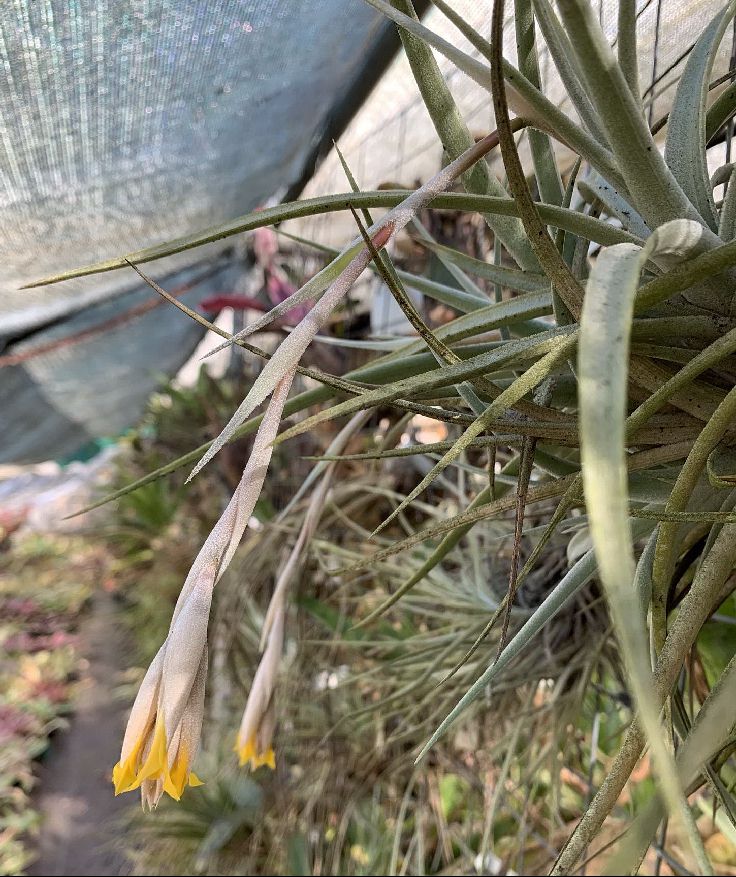
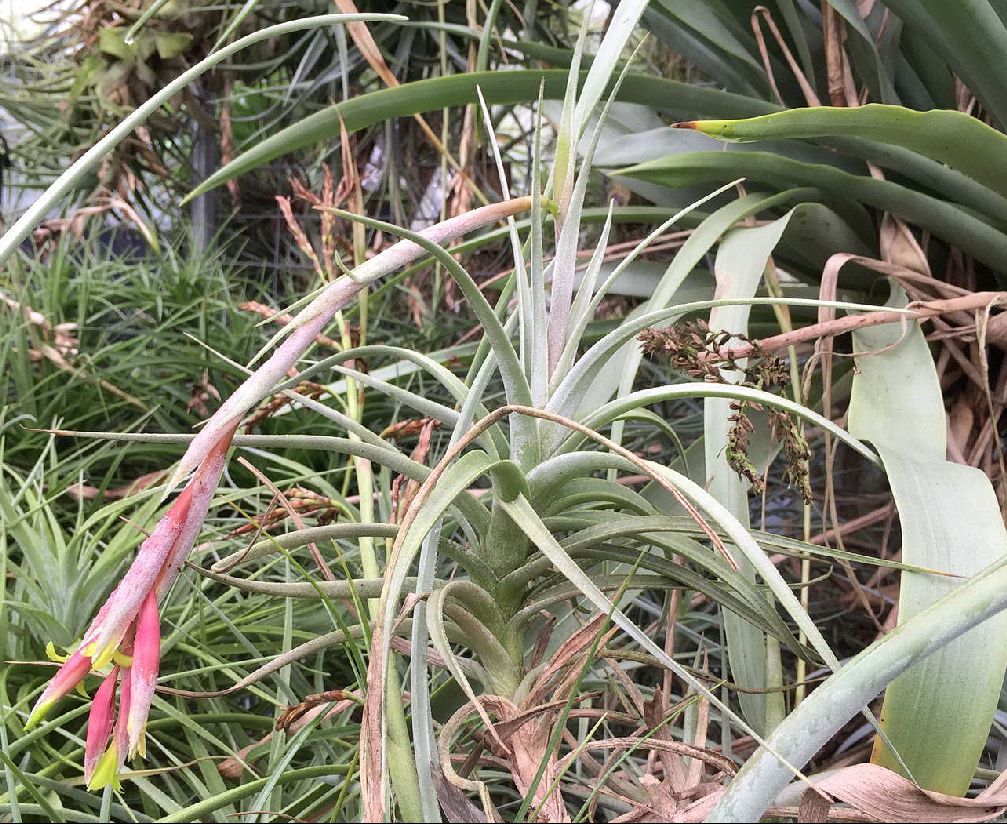
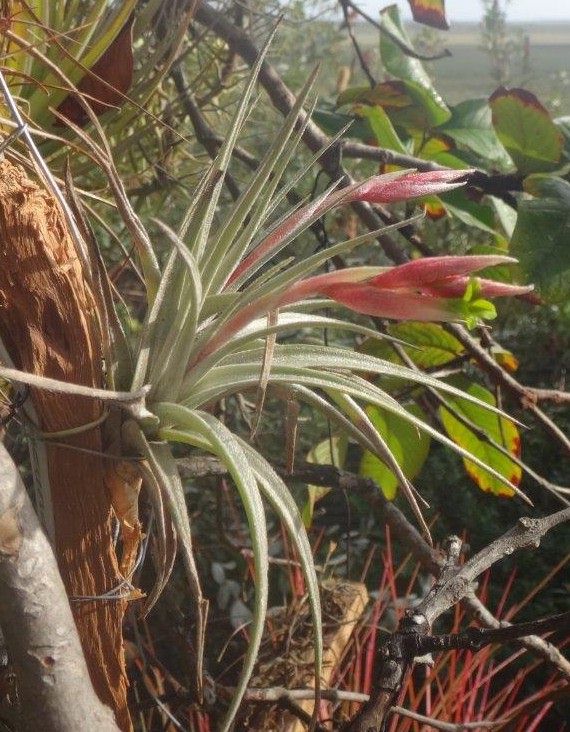
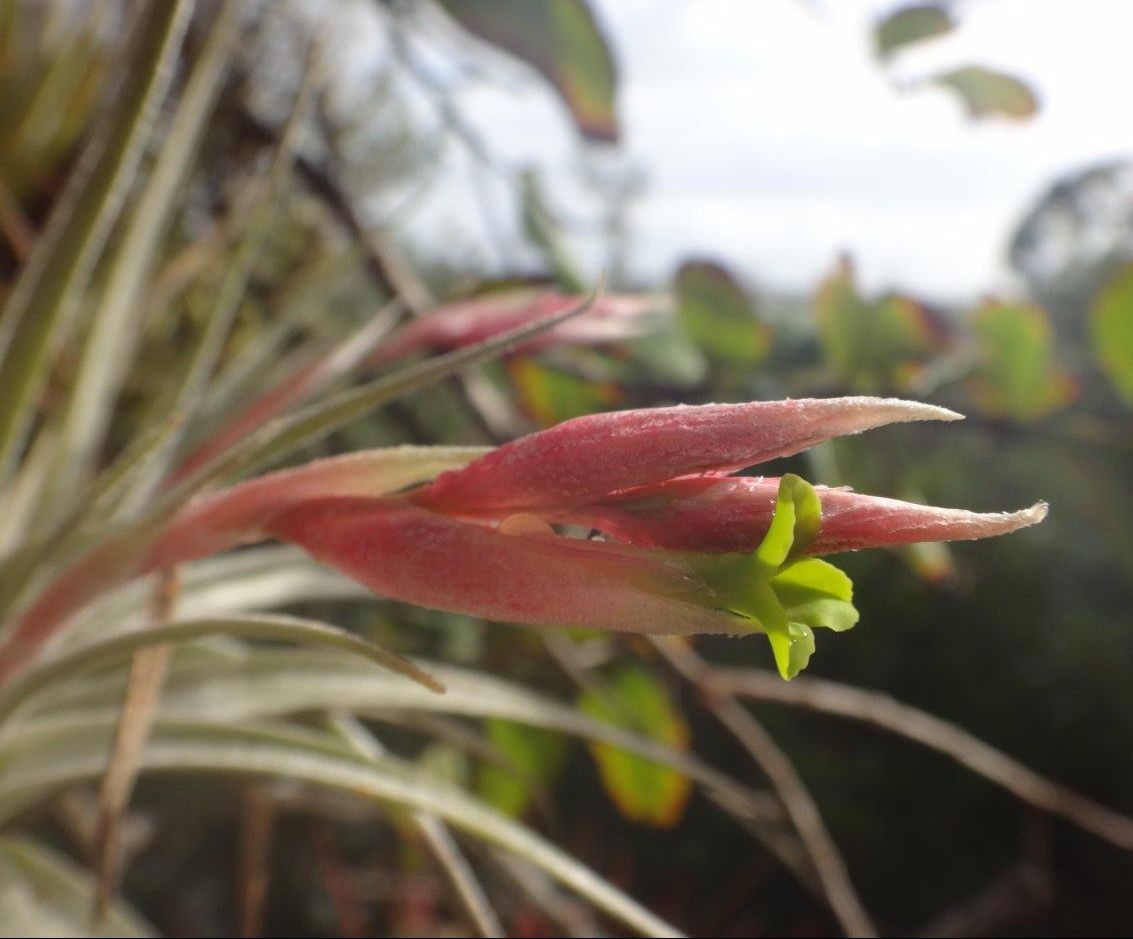
| Peter Tristram 08/19 large ixioides |
Peter Tristram 08/19 var. viridiflora ex KK |
Rob Bower 03/20 as jucunda v. viridiflora |
Peter Tristram 08/19 ... "Most of us have a form or two of T. ixioides. It was one of the first species I imported around 1979. The ixi in the pic is one of them and a very large form. The other ixi has had an identity crisis at times but is now listed as ‘Tillandsia ixioides subsp. viridiflora (Rauh) Gouda’ in Taxon. This form is also a large one and came from Knize in more recent times. There are smaller forms around too. The two ixis are hard to tell apart unless they are in full bloom then the colour differences are stark, though the actual structures are pretty close. I reckon it was a good call to get the green-petalled form out of jucunda and back into ixioides."
Derek Butcher 03/20 ... "Rob. I can understand the viridiflora bit but why isn't it T. ixioides ?"
Rob Bower ... "I guess 'cause that's what was on the label when I got it' isn't going to cut it?
Im not good at using those descriptions but I now think its ixioides subsp viridiflora - this is due to - 'more spathulate petals with distinct (rhombic to) elliptic or obovate blades about 7 mm wide' and the 'basal half is rose, reddish to red (Rauh 1979: rosafarbig).' Right?? Is this what you meant? I took a closer look at the pic and the basal part of the flower is rosy."
Peter Tristram ... "It’s straight forward - T. ixioides ssp viridiflora (think ‘80s) became T. jucunda var viridiflora (‘90s +) became T. ixioides ssp viridiflora again sometime. Chris Larson reminded me of that not long back when I erred. Got to keep all of those labels up to date!
There are a few clones of this dainty species. There’s the quite smallish form, the original form in my collection, like Rob’s, the medium form like Justin’s, also an oldie, and the form with the very long peduncle ex KK and Holm, more recently imports."
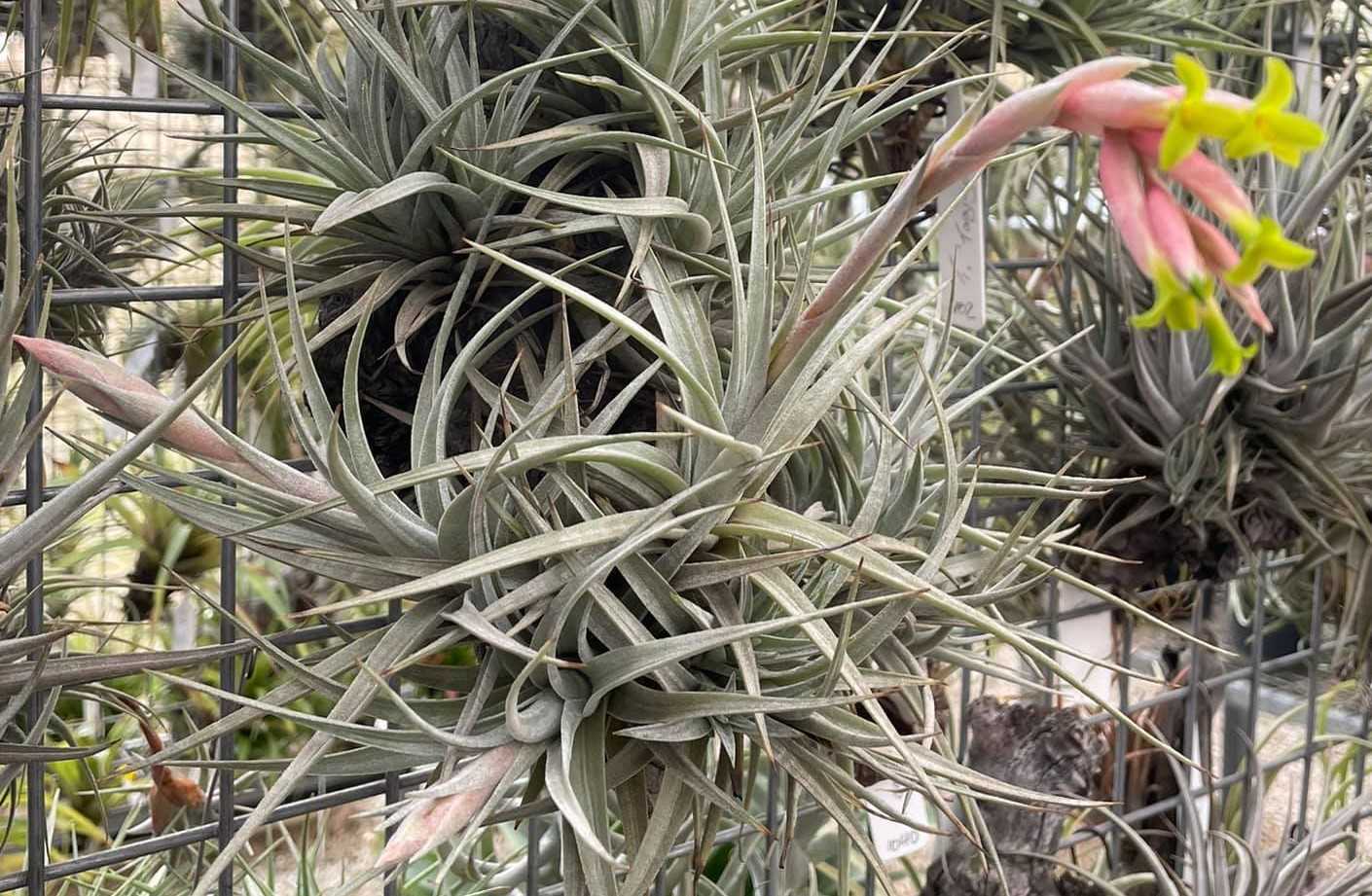
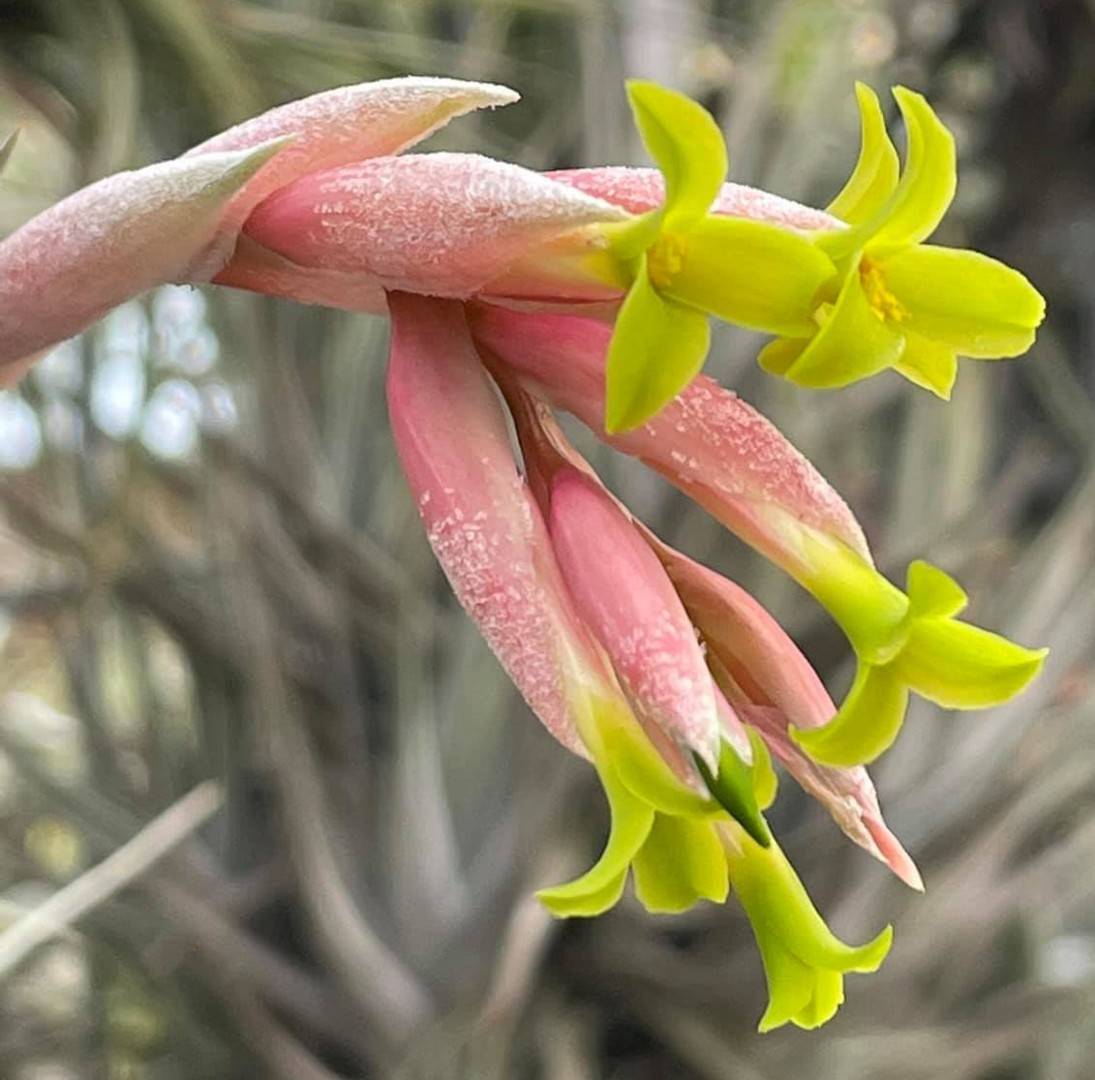
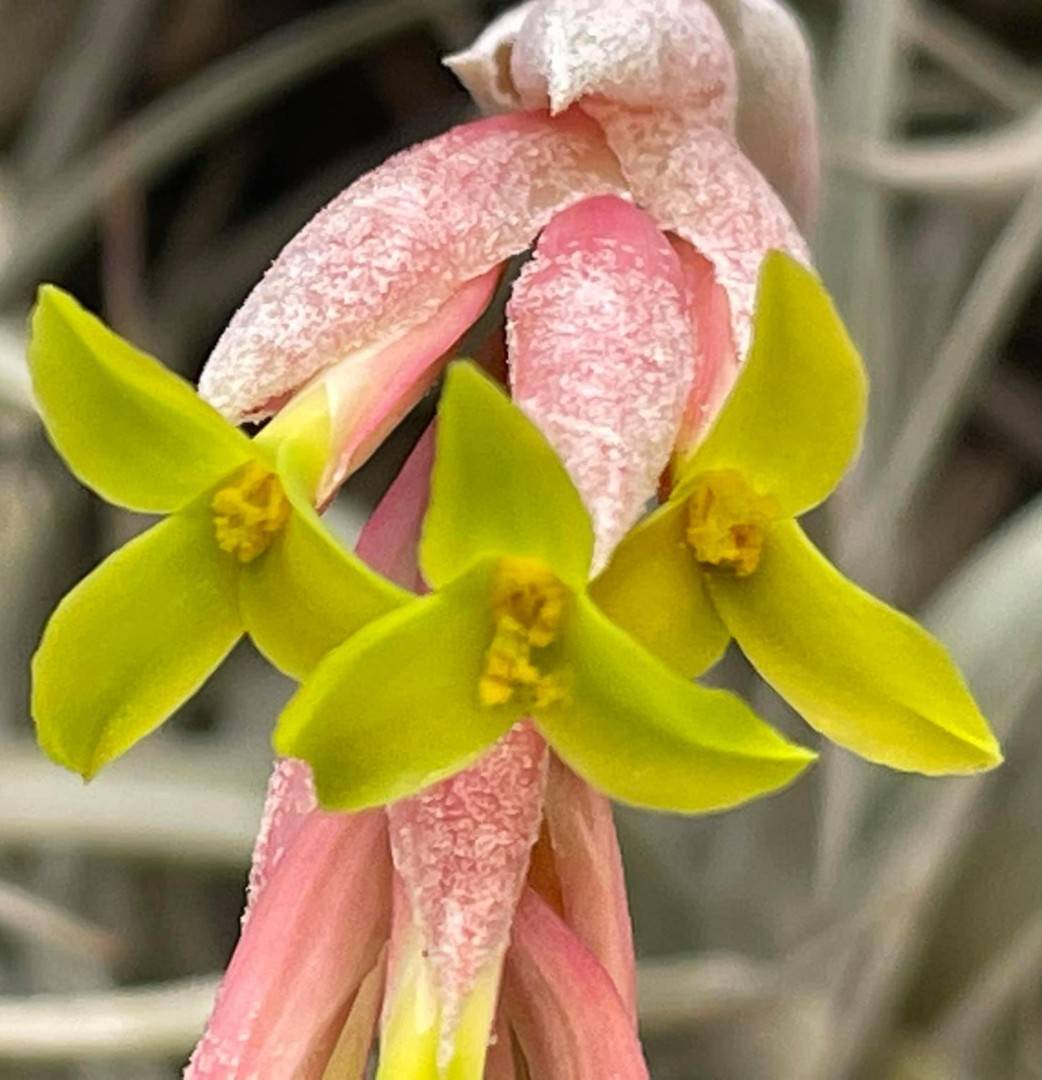
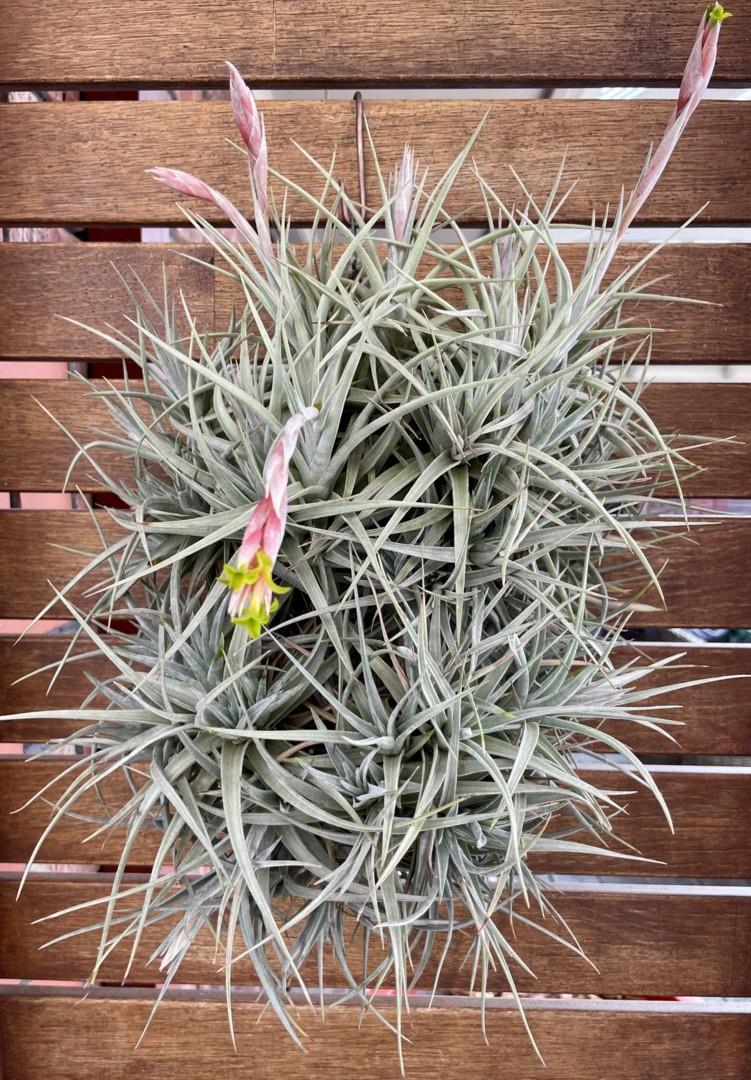
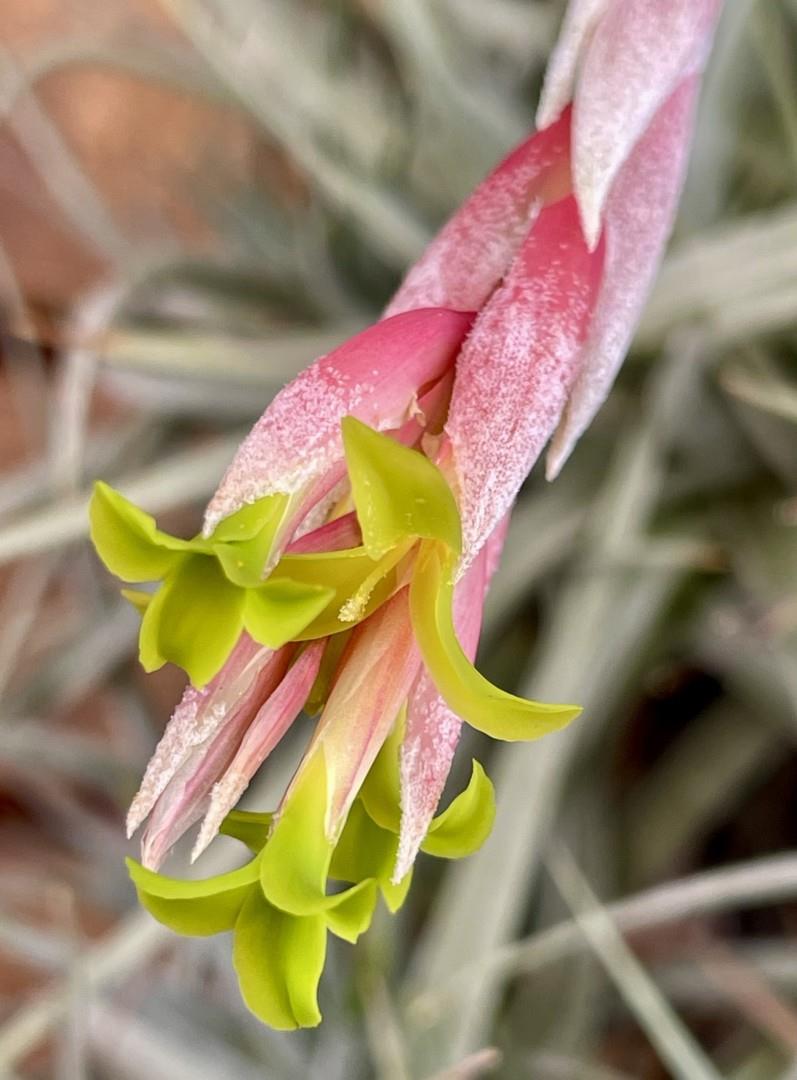
| Ray Clark 05/25 ex Derek Butcher and Lotte |
Tillandsia ixioides Grisebach, Symb. Argent. Gott. Abh. 24: 333. 1879.
Tillandsia lutea Baker, Handb. Bromel. 198. 1889. Type. Morren Icon (K).
Anoplophytum luteum E. Morren ex Baker, Handb. Bromel. 198. 1889; nomen.
Tillandsia canescens Hortus ex Baker, Handb. Bromel. 198. 1889; nomen.
Tillandsia ixioides var occidentalis Castellanos, An. Mus. Nac. Hist. Nat. Buenos Aires 37: 504. 1933. Type. Barranca Colorada, Capital, Tucuman, Argentina, Venturi 870 (LIL, US photo), 8 Aug 1920.
Desc from S&D p821-2
Plant more or less caulescent; stem usually simple, 3-12 cm long; flowering axis 8-30 cm high, averaging larger in the northwest (var occidentalis) but not significantly.
Leaves many, densely polystichous along the stem;
Sheaths distinct, triangular, glabrous and sub hyaline at base, covered with appressed cinereous scales elsewhere;
Blades suberect to spreading or slightly secund, very narrowly triangular, 10 mm wide, deeply channeled becoming involute toward apex, rigid, covered with appressed cinereous scales.
Scape erect or ascending, equaling or exceeding the leaves, slender, glabrous;
Scape-bracts imbricate, ovate, subacute, thin, stramineous, lepidote.
Inflorescence simple, of 3-7 polys¬tichous flowers, sublax, 45 mm long; rhachis straight, subangled, glabrous.
Floral bracts suberect, broadly ovate or elliptic, subacute, about 20 mm long, exceeded by the sepals, thin, faintly nerved, stramineous, lepidote toward apex;
Pedicels stout, to 5 mm long.
Sepals ovate, acute, to 19 mm long, connate more highly posteriorly, carinate, hyaline, nerved, glabrous;
Petals to 34 mm long, yellow, the blade reflexed-spreading, elliptic;
Stamens shorter than the petals; filaments straight; anthers linear, 4 mm long.
Type. Lorentz 1196 (holotype B, isotypes BM, G-B, GOET, K, M, US), Concepcion del Uruguay , Entre Rios, Argentina, Oct 1877.
DISTRIBUTION. Epiphytic, from near sea level to 2200 m alt, Bolivia, Paraguay, Uruguay, northern Argentina.
BOLIVIA. TARIJA: Amareta, jun 1873, Lorentz & Hieronymus 638 (CORD, GOET, NY). CHUQUISACA: Tomina, Feb 1949, Cardenas 4093 (GH, US). PARAGUAY. (Rio ?) Parana, Christie s n (K); without exact locality, Miers 1364 (BM). URUGUAY. COLONIA: Conchillas, 1924, Feisseire s n (MVM). MONTEVIDEO: Oct 1879, Gibert s n (MVM); 5 Nov 1886, Safford 110 (US). ARGENTINA. JUJUY: Jujuy, 4 Oct 1938, Eyerdam & Beetle 22418 (GH, UC); 23 Oct 1948, Skottsberg s n (GB); Velarde s n (US). SALTA: La Candelaria, 14 Aug 1932, Schreiter 8793 (GH, NY, LIL); Alemania, 13 Aug 1936, Cabrera 3776 (GH, SP, F). CATAMARCA: Quebrada del Tala, Capital, 15 Jun 1908, Castillon 819 (GH, LIL); 6 Sep 1910, s n (GH, LIL). TUCUMAN: Rio Calera, Tranquitas, 9 Sep 1900, Lillo 2590 (GH, LIL); Estancia San Teodoro, 8 Sep 1909, Stuckert 20314 (LIL); Rio Chico, La Calera, 30 Nov 1913, Monetti 1583 (GH, NY); Tapia, 4 Feb 1917, Schreiter s n (GH, LIL, NY); 30 Aug 1917, s n (MVM); Chaflar Pozo, Leales, 20 Aug 1920, Venturi 334 (GH, US); Rio Loro, Bur¬ruyaco, 5 Nov 1923, Venturi 2498 (US). SANTIAGO DEL ESTERO: Cerro del Remate, Pellegrini, 8 Oct 1927, Venturi 7051 (BM, GH, US). CORDOBA: Rio Primero, Estancia San Teodoro, 6 Oct 1900, Stuckert 9538 (CORD); 24 Apr 1903, 13066 (CORD); 30 Nov 1905, 15199 (CORD, G); Capital, 12 Feb 1906, Stuckert 15553 (CORD); Marcos Juarez, 6 Sep 1906, Stuckert 15946 (CORD). ENTRE RlOS: Concepcion del Uruguay, 30 Oct 1875, Lorentz 494 (CORD GOET); s d ,544 (Z); Guayquiraro, 10 Oct 1964, Crespo s n (SI).
Protologue
Tillandsia lutea Baker, Handb. Bromel. 198. 1889. Type. Morren Icon (K).
175. T. LUTEA Baker.
Anoplophytum luteum E. Morren (M.D.).
Acaulescent. Leaves 15-20 in a dense rosette, lanceolate-acuminate, 4-5 in. long, ? in. broad above the base, firm in texture, finely lepidote, deeply channelled down the lower part of the face, the lower very spreading. Peduncle longer than the leaves; bract leaves small, linear. Inflorescence a few-flowered simple dense spike; flower-bracts ovate, acute, ¾ in. long. Calyx ½ in. long; sepals lanceolate. Petals fulvous-yellow, half as long again as the calyx.
Hab. Uruguay. Described from Prof. Morren's drawing, made from a plant flowered by M. Jacob-Makoy at Liege, in April, 1880. Introduced by Ruchinger, of Venice, in 1876 (T. lutea and T. canescens Hort.)
Tillandsia ixioides subsp. viridiflora (Rauh) Gouda, comb. et stat. nov. Die Brom 2: 76-79. 2010.
Basionym : Tillandsia jucunda var. viridiflora Rauh (1979). (Rauh, W. 1979. Bromelien-studien I. Neue und wenig bekannte Arten aus Peru und anderen Landern (9. Mitteilung). Trop. Subtrop. Pflanzenwelt 31: 13.)
In 1979 Prof. Werner Rauh described a new Bolivian variety of the Argentinean species Tillandsia jucunda A. Cast. as Tillandsia jucunda var. viridiflora. The main differences are the hanging inflorescences with the green flowers and the more silvery cinereous leaves. Except the green colour of the petals, those characteristics are more typical (see figure ) for the more widespread Tillandsia ixioides Griseb. (Argentina, Bolivia, Paraguay, Uruguay, Brazil), not mentioned in Rauh's description of this new variety.
A closer study of the flower characteristics proves that this variety is closer to T. ixioides than to T. jucunda. That's why a new combination along with a new status is proposed:
Tillandsia jucunda has more brightly coloured, lustrous, nearly glabrous floral bracts (except for the apex) and more or less (2-5 mm) connate sepals that are, in relation to T. ixioides much narrower. The size of its sepals is 16-21 by 7-8 mm and the widest point is just below the middle, making them narrowly ovate to narrowly elliptic.
Tillandsia ixioides as well as T. ixioides subsp. viridiflora have free or sub-free sepals that measure 16-19 by 9-10 mm with the widest point near the base and elliptic margins, making them triangular-ovate.
The petals also differ from T. jucunda, that has flowers, which are similar to the T. tenuifolia group. The petals of T. jucunda are ligulate, the blade not very distinctive and only slightly broader than the claw (about 5 mm wide). Tillandsia ixioides and its new subsp. viridiflora have more spathulate petals with distinct (rhombic to) elliptic or obovate blades about 7 mm wide.
The floral bracts of T. ixioides subsp. ixioides are ochraceous (nearly colourless) at anthesis, to greenish at the base. The basal ones are densely lepidote for most of their parts, the apical ones are glabrescent in the basal half. The petals are bright yellow.
The floral bracts of T. ixioides subsp. viridiflora are mostly ochraceous and densely lepidote in the apical half as in the other subspecies, but the basal half is rose, reddish to red (Rauh 1979: rosafarbig).
The petals are bright green. In general, this new subspecies has slightly larger flowers, but this size can be observed in the more variable type subsp. too and seems to depend on both condition and variation.
For example, we are growing a specimen (Utrecht accession U2005GR01252) from Argentina with an inflorescence longer than 20 cm. The syntype of T. meridionalis Baker, also synonym to T. ixioides subsp. ixioides (Tweedie s.n. (K!), Uruguay), is comparable in size. Tillandsia ixioides var. occidentalis (unofficially used in trade for T. ixioides subsp. viridiflora), is partly based on Venturi, S. 870 (syntype K!) and is a large T. ixioides subsp. ixioides too.
Material studied
For T. ixioides subsp. viridiflora:
Bolivia (central), W. Rausch 54 (holo HEID), generously donated by the Botanical Garden Heidelberg (see figure 1), used for the type of T. jucunda var. viridiflora by Rauh (HEID104256), no other material is known to me at the moment.
For T. ixioides subsp. ixioides:
Argentina, Salta, C.S. Gouda s.n. (U2002GR01077, see figure 1); Quebrado-forest near Tucuman, alt. 1000 m, W. Rauh 64184 (HEID103569); Northwest, Kauffmann s.n. 30-05-l 989 (U2005GRO1252) originated from Bot. Garden Halle; prov. Tucuman, alt. 550 m, S. Venturi 870 (K!).
Bolivia, prov. Tarija, Entre Rios (Salinas), C.S. Gouda 96-20 (U1996GR01236). Brazil, Rio Grande do Sul, Vila Nova do Sul, BR-290, km 361, collector unknown, (U2008GR00227); collector unknown, originated from Bot. Garden Dresden (U2003GR017l 8). Uruguay, Tweedie s.n. (K!), syntype of T. meridionalis Baker.
Tillandsia jucunda var. viridiflora W. Rauh Bromelienstudien 31 (1979)
A typo distinguenda inflorescentiis valde pendulis et floribus omnino viridibus.
Habitat: Bolivia (locus coll. ignotus).
Holotypus : Rausch 54 = hortus botanicus heidelbergensis BGH 31614, herb. inst. bot system. univ. heidelb. (HEID).
Translated by Butcher.
This new variety, that has already flowered in cultivation several times, differs from the yellow flowered Type (var. jucunda), by its hanging inflorescense and the pure green, not yellow flowers. It came from the Cactus collector W. Rausch, Vienna, under the number 54 (without exact location) collected in central Bolivia and is under cultivation in the Botanical Garden of the University of Heidelberg under the number 31 614.
Plant in clumps, single plants with stems, flowering to 20cm high, leaves numerous, spirally arranged, almost erect, hard.
Leaf Sheath indistinct, roundish, ( 1.5 x 1cm).
Leaf Blade narrow lance like, long acuminate, rolled inwards, 8mm wide at base, both sides dense grey scaled.
Scape hanging, ca. 10cm long, 1.5mm thick.
Scape bracts leaf like, longer than the internodes, grey lepidote, the upper ones with more reddish and more lepidote tip.
Inflorescence hanging, simple, to 5cm long, 1.5cm wide, ca. 5 flowered.
Floral bracts erect, ca. 3 cm long, 1.7cm wide, lance like acuminate, thin membranous, pink coloured, at the bottom glabrous, the tips grey lepidote, not keeled, widely exceeds the sepals.
Sepals 16mm long, lance like acuminate, the posterior ones keeled, thin, pink.
Petals 25mm long, pointed, with broad, blunt, 5mm wide platte and 3mm wide point, bright green Stamens and Style enclosed.
Locality unknown in Bolivia
Type Rausch 54 = BGH31 614 HEID
Consequently, the only known two varieties are:
var. jucunda: Inflorescense ± erect; flowers yellow ( fig. 5)
var. viridiflora Rauh: Inflorescense hanging ( fig. 6); flowers shiny green. Has sometimes been unofficially named in the Nursery Trade as T. ixioides var. occidentalis.
(Note: jucunda var. viridiflora has now been moved to T. ixioides subsp. viridiflora)
Updated 06/06/25


























